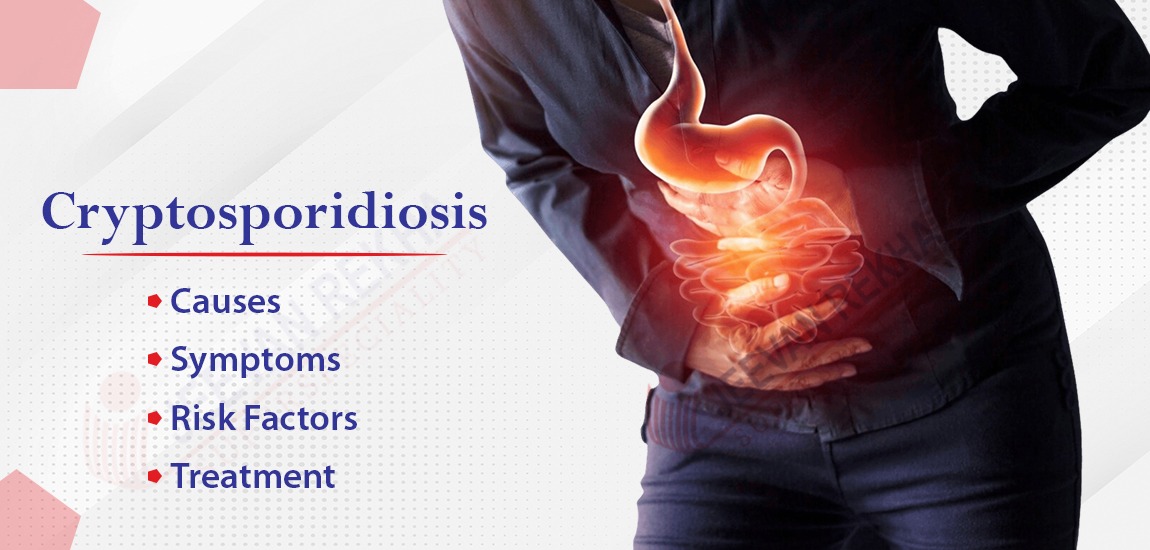
- By JRSH Admin
- In Health and Tips,
- Posted August 13, 2022
Vaginal Infections (Vaginitis): Types, Symptoms, Treatment & Prevention
What are Vaginal Infections (Vaginitis)?
The medical term "vaginitis" refers to many conditions that result in an infection or inflammation of the vagina. Vaginal and vulvar inflammation is referred to as vulvovaginitis (the external female genitals).
These ailments may be the result of an infection brought on by bacteria, yeast, or viruses. Vaginitis can also be brought on by chemical irritations from creams, sprays, or even garments that come into contact with this area. Vaginal dryness, a lack of oestrogen, and organisms that are transferred between sexual partners can occasionally cause vaginitis.
Types of Vaginal Infections
- Bacterial vaginosis (BV). A thin, greyish-white, greenish, or yellow discharge is a common symptom of BV. The smell of this discharge, which is often like fish, tends to get worse after penetrating vaginal sex. You might not feel a lot of itching.
- Yeast infections. These frequently entail burning, pain, and itching in the vagina and vulva area. The labia or the skin folds on the outside of your vagina may swell if you have a yeast infection. Any discharge is typically lumpy and white, with a consistency that some have compared to cottage cheese.
- Trichomoniasis. The common symptoms of this illness are vaginal irritation and a fishy odour. You can also notice oedema, irritability, and inflammation in your vagina and vulva in addition to a greenish-yellow, foamy discharge. Additionally, lower abdomen pain, burning, and pain while urinating are all signs of trichomoniasis.
- Atrophic vaginitis. Although this isn't a true infection, it can raise your risk of getting UTIs and vaginal infections. You may experience symptoms of atrophic vaginitides, such as vaginal itching, burning, dryness, and changes in discharge, that are similar to those of other infections.
- Gonorrhoea. Another common virus that is spread through sex is this one. It frequently coexists with chlamydia.
- Noninfectious vaginitis. Without an infection, this is vaginal discomfort. Most frequently, an allergic reaction or irritant is to blame. It may be brought on by chemicals in spermicidal products, douches, or vaginal sprays. Detergents, fabric softeners, or soaps with fragrances may potentially be the culprits. Menopause, surgical ovarian removal, or radiation therapy can all result in this. Even after childbirth, especially in women who are nursing, it can occur. The vaginal tissue gets dry and brittle from a lack of oestrogen.
Symptoms of Vaginal Infections
Similar to other medical illnesses, vaginitis symptoms can vary from woman to woman and can present in a variety of ways. If you get a diagnosis, make sure to visit your doctor.
Yeast infection symptoms include:
- a cottage cheese-like, thick, white, odourless vaginal discharge
- vulva and vaginal redness and itching
- pain during sex or urination
Bacterial vaginosis symptoms include:
- a slender, whitish vaginal fluid
- a viscous, greyish or green vaginal fluid
- Fluid has a fishy odour.
Trichomoniasis symptoms include:
- frothy, musty-smelling vaginal discharge that is greenish yellow in colour
- Vagina and the area around the vulva may itch or burn.
- Redness or swelling at the vaginal entrance
- Particularly after sex, a little bleeding
- Urination causes burning
- the lower belly hurts (abdomen)
- Sexual discomfort
- in some circumstances, no symptoms
Viral vaginitis symptoms include:
- if HSV is the source, vaginal pain from sores
- If HPV is the culprit, there may be no painless warts on the vagina, rectum, vulva, or
- groyne. But HPV can exist even if no apparent warts are present.
Noninfectious vaginitis symptoms include:
- Itching, discomfort, burning, or dryness in the vagina
- Vaginal discharge Painful or uncomfortable sex
- After-sex spotting due to atrophic vaginitis
Causes of Vaginal Infections
Depending on the type of vaginitis you have, the reason may be:
- Bacterial vaginosis. This most prevalent form of vaginitis is caused by an alteration in the bacteria that are present in your vagina, which throws the balance off. The imbalance's origin is uncertain. Symptomless bacterial vaginosis is a possibility.
This sort of vaginitis can also affect women who aren't sexually active, although it seems to be related to sex rather than being the cause, especially if you have several partners or a new relationship. - Yeast infections. These take place when a fungus, typically Candida albicans, overgrows in your vagina. Additionally, C. Albicans can cause infections in your mouth (thrush), skin folds, and nail beds, which are all moist parts of your body. Moreover, the fungus can result in diaper rash.
- Trichomoniasis. Trichomonas vaginalis is a minute, one-celled parasite that is responsible for this widespread sexually transmitted infection. When having sex with a person who has the virus, this bacterium spreads.
The organism typically affects the urinary system in men, however, it frequently has no symptoms. Trichomonas typically affects the vagina in women and may result in symptoms. Additionally, it raises women's chance of contracting other STDs. - Noninfectious vaginitis. Sprays, douches, scented soaps, scented detergents, and spermicidal treatments used vaginally have the potential to irritate or trigger an allergic reaction in certain people. Additionally, foreign things in the vagina, including used tampons or toilet paper, might irritate the vaginal tissues.
- Genitourinary syndrome of menopause (vaginal atrophy). The lining of your vagina can become thinner due to reduced oestrogen levels following menopause or surgically removing your ovaries, which can occasionally cause vaginal irritability, burning, and dryness.
How is a vaginal infection diagnosed?
A doctor may swab the vagina or skin outside the vagina to obtain a diagnosis and send this swab to a lab for testing.
A laboratory can run some tests on these swabs, including:
- the wet prep, in which a technician dips the swab into a saline solution and examines
- it with gramme stain, frequently to diagnose yeast infections and BV cultures.
- DNA technologies are frequently used to diagnose bacterial STIs.
How are vaginal infections treated?
Vaginitis can be brought on by a variety of pathogens and ailments, thus therapy focuses on the exact cause:
- Bacterial vaginosis. Your doctor may advise metronidazole tablets (Flagyl) to be used orally for this form of vaginitis or metronidazole gel (MetroGel) to be applied topically. Other therapies include applying clindamycin (Cleocin) cream to the vagina, taking clindamycin tablets orally, or inserting clindamycin capsules into the vagina. Seconidazole (Solosec) or tinidazole (Tindamax) are administered orally.
After treatment, bacterial vaginosis may return. - Yeast infections. An over-the-counter antifungal cream or suppository, such as miconazole (Monistat 1), clotrimazole (Lotrimin AF, Mycelex, Trivagizole 3), butoconazole (Gynazole-1), or tioconazole, is typically used to treat yeast infections (Vagistat-1). Another option for treating yeast infections is with a prescription for an oral antifungal drug like fluconazole (Diflucan).
The benefits of over-the-counter medication include cost, convenience, and the absence of a waiting period for medical attention. You might, however, have a condition other than a yeast infection. Choosing the incorrect medication could delay getting the right diagnosis and treatment. - Trichomoniasis. Tinidazole (Tindamax) or metronidazole (Flagyl) tablets may be recommended by your doctor.
- Genitourinary syndrome of menopause (vaginal atrophy). This disorder can be treated with oestrogen in the form of vaginal creams, pills, or rings. After considering other risk factors and potential problems, your healthcare professional will provide you with a prescription for this medication.
- Noninfectious vaginitis. You must identify the source of the discomfort and avoid it to treat this kind of vaginitis. New soap, laundry detergent, sanitary towels, and tampons are a few potential sources.
How can you prevent vaginal infections?
Although not all vaginal infections can be avoided, following these recommendations can lessen your risk of contracting one:
- The use of perfumed tampons, pads, and liners is not advised.
- Do not use any scented sprays or fragrances on or in your vagina, do not touch, and do not use vaginal deodorants.
- Bathe exclusively in plain water because the pH of the vagina can be impacted by bubble baths and scented body washes.
- After each usage, wash your sex toys as directed on the packaging. Don't share sex toys before you've cleaned them.
- Wearing undergarments made of cotton or having a cotton crotch will help to increase airflow and reduce vaginal irritability and inflammation. Whenever you exercise or at least once every day, change your underpants.
- Keep to cotton-crotched workout bottoms, tights, leggings, and pantyhose.
- As soon as you can, change out of your wet training clothes and swimwear to help reduce unnecessary moisture.
- Skip the perfumed laundry softener and use an unscented detergent or one made for sensitive skin instead.
Although vaginal infections are not STIs, using condoms during sex can still help reduce your risk of getting one.
When should you see a doctor?
When you give an infection a head start with over-the-counter or home medicines, some vaginal infections may go away without medical attention.
Infections, however, don't always get better on their own. You should schedule a consultation with your doctor or other healthcare providers if you:
- you have never had a vaginal infection before or you previously had a vaginal
- infection but your symptoms are new or different
- experience symptoms that don't go away with over-the-counter medication think you may have been exposed to an STI notice yellow, bloody, or discharge with a foul odour have additional symptoms including vomiting, fever, or low back and stomach discomfort
- urinate more frequently or with difficulty than normal
Tags
Blog Search
Latest Posts
-
Dark Circles Under The Eyes: Causes, Home Remedies and Treatments
December 21, 2025 -
बर्ड फ्लू के लक्षण, कारण, उपचार और बचाव के उपाय जानें
December 04, 2025 -
Best Diet Plan for Menopause Weight Management
November 25, 2025 -
Pulmonary Fibrosis Treatment: Understanding Lung Scarring and Breathing Problems
November 21, 2025 -
Arrhythmia: Types, Causes, Symptoms, and Treatment
November 07, 2025




